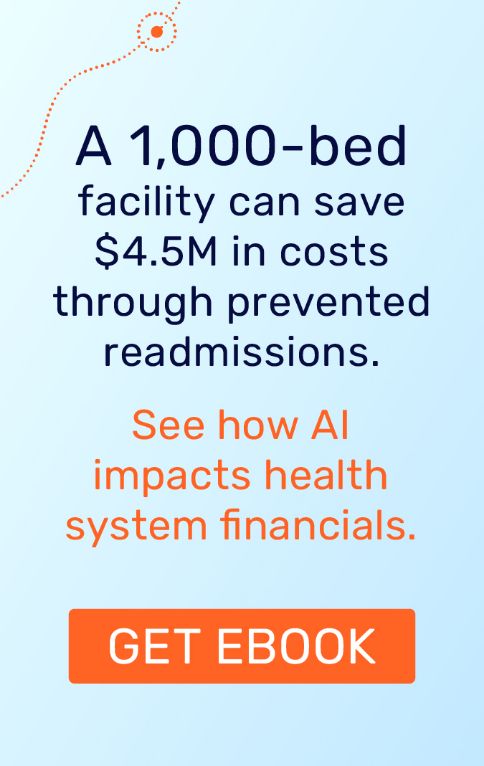Hospitals and health care facilities are constantly looking for ways to measure quality of care, which is no easy task. Yet hospitals depend on performance metrics to ensure quality of care is sustained and improved upon, especially with the integration of technologies. After onboarding new technologies—especially ones like AI—though, the question begs: now what? How can performance be measured? What metrics should be the focal point of measuring?
Currently, hospitals and healthcare facilities are evaluated based on the following hospital key performance indicators:
- Regulatory inspection
- Customer surveys
- Statistics
- Internal assessment
- External assessment
Each country or city has its own regulations that all healthcare facilities must be in compliance with to ensure safety and quality of patient care, which factor heavily into the above list. These regulations are provided as part of licensing requirements for these facilities to operate. Oftentimes, some metrics are more difficult to quantify or isolate and measure, which is why hospital leaders rely on heavily descriptive studies and limited data available to them to get a glance at the organization’s overarching performance. But this can be, to a degree, simplified. These metrics are also utilized in benchmarking practices, which are standard for hospitals to compare how they stack up against their fellow healthcare organizations.
KPIs for hospitals
Healthcare facilities are riddled with complex administrative and regulatory challenges. Despite the fact that these two together can pose difficulties in assessing hospital performance, industry experts have come up with some key metrics to consider. These metrics are not all-encompassing, but they tackle essential aspects of the care continuum, such as standardized healthcare processes, organizational structure, and patient outcomes. These KPIs can have broader reaching implications beyond the emergency department (ED), including sometimes financial outcomes.
Here are important KPIs:
1. Patient mortality
The rate of mortality is arguably the most essential health outcome metric for the population, especially from a clinical perspective. This metric is influenced by a variety of factors within the hospital’s workflows and can be attributed to a variety causes. Hospitals can also observed what’s called a mortality ratio, comparing “observed mortality,” the rate of patient deaths in hospital each quarter, against “expected mortality,” which is the expected average of deaths for hospitalized patients with a condition or illness that’s beyond the control of the healthcare institution.
In one case study, Piedmont Healthcare looked at the total number of pneumonia inpatient mortalities out of a total of all patients who were interned for the disease, with a clear goal in mind of reducing mortality. Piedmont created standardized guidelines and coordination systems, driven by data and used patient management software to track disease progression and trajectory, with insights on potential and resultant patient outcomes.
Piedmont was able ultimately to reduce the mortality rate for patients “coded with a pneumonia diagnosis” by over 56%, which in turn led to an estimated $220,000 in savings for the year from reduced length of stay for patients admitted for pneumonia.
2. Length of stay
The length of stay (LOS) metric is a popular one for insights on the use of hospital resources and to understand quality of care and to look for potential inefficiencies in the care process where hospital resources can be conserved. Often, this metric is assessed in intervals of time saved with bed occupancy, but also this can translate into dollar values.
But these metrics are also influenced by a variety of variables, such as turnaround time to report positive detections from the radiology department. For example, depending upon how quickly a radiologist can report a finding, the patient’s stay may be optimized to be shorter than necessary. In study of machine learning’s ability to impact turnaround time and reduce length of stay for CT head examinations, Yale researchers found a 14.1% decrease in non-ICH patient LOS and a 12.7% decrease in LOS for ICH patients.
While it’s difficult to place a one-size fits all estimate on the actual sum of money saved per bed when the length of stay is reduced, a five-year length of stay reduction study in Syracuse found, at a late stay rate estimate of $600, that the hospital could eliminate $4,263,600 for adult medicine and $6,363,000 adult surgery over a five-year span.
3. Safety of care
Healthcare systems everywhere stress this metric very closely with mortality rates, but this performance indicator can be influenced by numerous factors, including surgical mistakes, clinician burnout, staffing shortages, supply shortages, and more. It essentially accounts for the number of hospital incidents that came as a side effect of procedures performed at that hospital, or unintentional ones.
By analyzing the individual factors that influence this metric, senior management personnel can better understand how to reduce negative impact. But many of these factors relating to patient safety can be difficult to measure with confidence, such as the impact of physician burnout on patient care. Some research teams have taken a stab at it.
In evaluating radiologist burnout in the U.S., Chetlen et al. recommended utilizing a wellness scale to regularly assess physicians on staff for factors like “personal fulfillment, work engagement, stress, work-life balance, and quality of life”—variables largely considered qualitative. Administrators could, however, aggregate the data from a survey into a quantifiable metric and evaluate against other hospital performance indicators.
4. Bed occupancy rate
Bed occupancy rate plays an important role in understanding hospital overload and patient safety and quality of care. An optimal occupancy rate for larger hospitals is estimated to be 85%, while for smaller hospitals the optimal rate is about half, at 45%. Occupancy rates that are too high tend to negatively impact patient care across different areas of the hospital, and especially for emergency departments (ED), which may find themselves unable to provide enough care to each patient if overwhelmed by crowdedness.
Shih-Chuan Chou et al. studied in detail the effects of high bed occupancy—and their correlation to increased laboratory testing, advanced imaging, and medication administration—and the results pertaining to fewer admissions and increased time to patient disposition. The team found that there was little correlation between high bed occupancy and high rates of testing and treatments in the ED, but merely that high occupancy resulted in decrease of admissions. This suggests that high occupancy directly negatively impacts patient disposition, which could lead to lower quality of care given that some patients may need to be turned away due to overcrowding.
5. Readmission rates
Readmission rates—defined as the percentage of patients who had to return to the same hospital within a 30-day period from the time of discharge—can often tie a number of metrics together. Poor performance of bed occupancy rate and patient safety metrics can bear heavy weight on readmission rates. Moreover, readmission rates can even be correlated with mortality rates in some instances.
For example, a clinical study from 2017 examined the association between CMS’s Hospital Readmissions Reduction Program (HRRP) with readmission and mortality outcomes among patients hospitalized with heart failure. The results indicated that while readmission rates decreased, as anticipated, 30-day risk-adjusted mortality rates rose by 7.2% before HRRP implementation and by 8.6% after the HRRP penalties phase. Similarly, one-year risk-adjusted readmission rates also dropped, but the mortality rates increased from just over 31% to 36.3%. This suggests mortality rates could seriously be impacted by specific types initiatives designed to improve one metric, while seriously inversely another with unintended consequences.
Readmission rates can also be closely correlated to bed occupancy. A UK-based study analyzed bed occupancies above the optimal levels, at 90%, against readmission rates. They found that a mere 1% increase in bed occupancy resulted in a 0.011% increase in the 30-day readmission rate for patients who’d been discharged. When the occupancy increased by more than 95%, readmission risk increased by 0.04% for each percentage point rise in bed occupancy above that threshold. The study also noted that despite the relatively low 30-day readmission rate increases with increasing bed occupancy, “the relationship was more pronounced in older and sicker patients, indicating possible links with short-fallings in discharge processes.”
Hospital performance metrics can be tricky and complex to analyze given the wide set of variables influencing the data. Nonetheless in considering the implementation of automation technologies like AI into a clinical setting, these are important metrics to closely follow up on to better understand broader impact.










